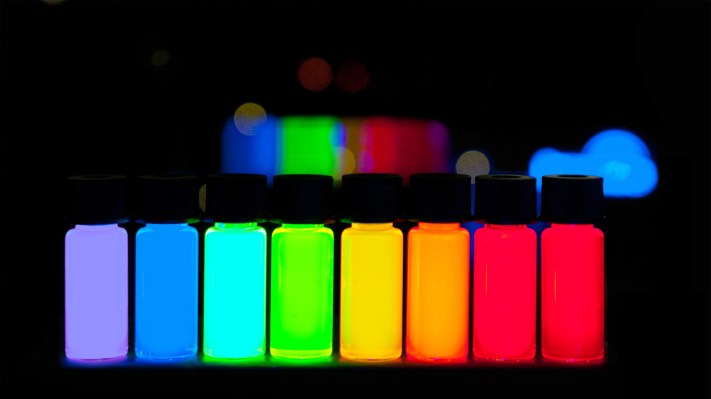Devices can’t get thinner for a few reasons. While a lighter, thinner battery would be amazing, screens still take up a lot of gadget real estate, a fact that is mitigated slightly by e-ink and other “flat” displays. Now, however, researchers are turning to Quantum Dot displays, screens that use light-emitting nanocrystals to display multiple colors in a screen that is surprisingly thin and can be “printed” using standard inkjet techniques. Manufacturers Samsung and Sony have produced some proof-of-concept displays that they showed at CES this year but they used QD displays as backlights, not as a display feature. Until now, no one has been able to create a full QD screen that works the way LED and OLED screens display images and text.
Researchers at the University of Illinois at Urbana−Champaign have been able to print the ink-like crystals onto thin screens using electrohydrodynamic jet printing, a technique used for creating proteins and other complex molecules. From the abstract:
What does all this mean? It means they’ve been able to place very tiny drops of QD material onto almost any surface. They can also place multiple colors over each other, allowing for a more efficient method of color mixing. This means RGB pixels could be even smaller since each pixel can light up in multiple permutations.
Ultimately, this technology is a few years from becoming commercially viable but, given the interest in smaller and smaller gear it could drive some exciting technologies in the future. You can check out more research here.
